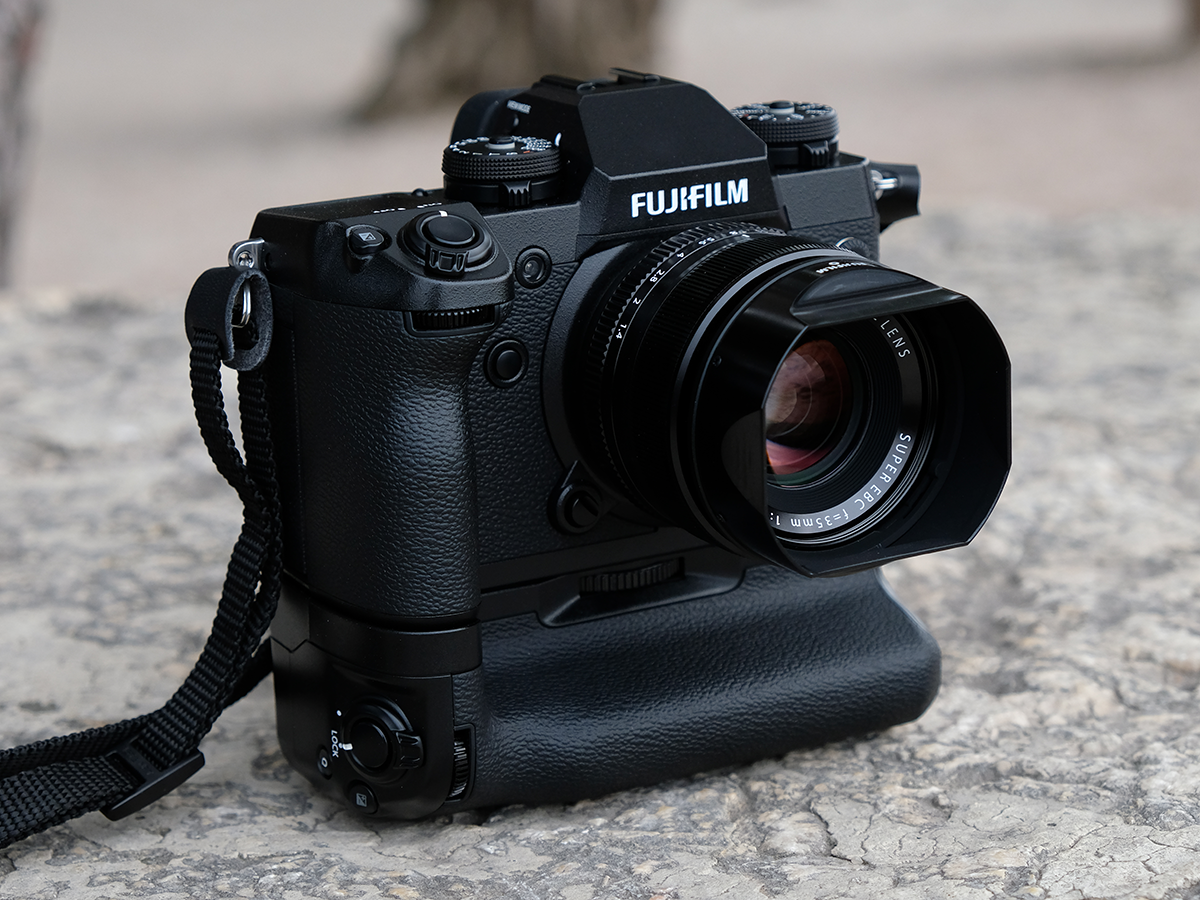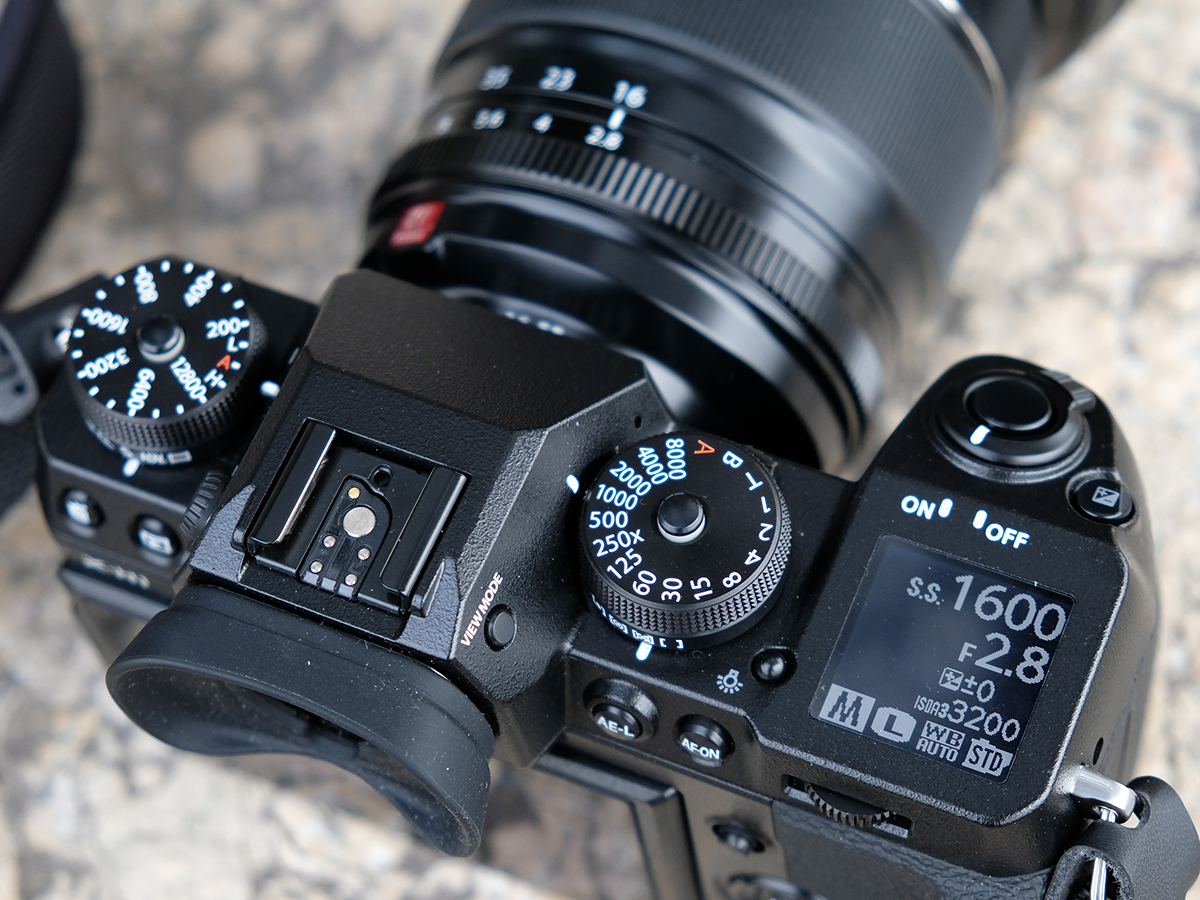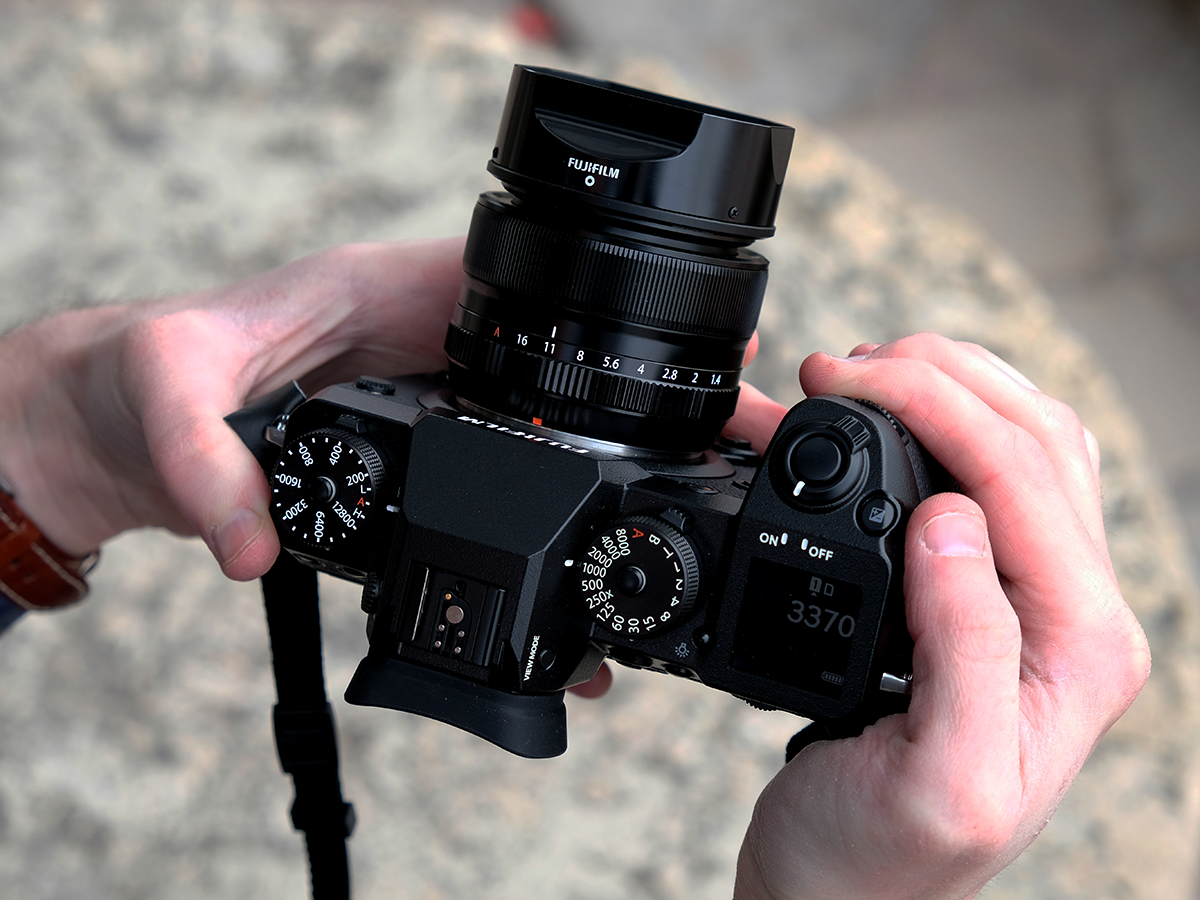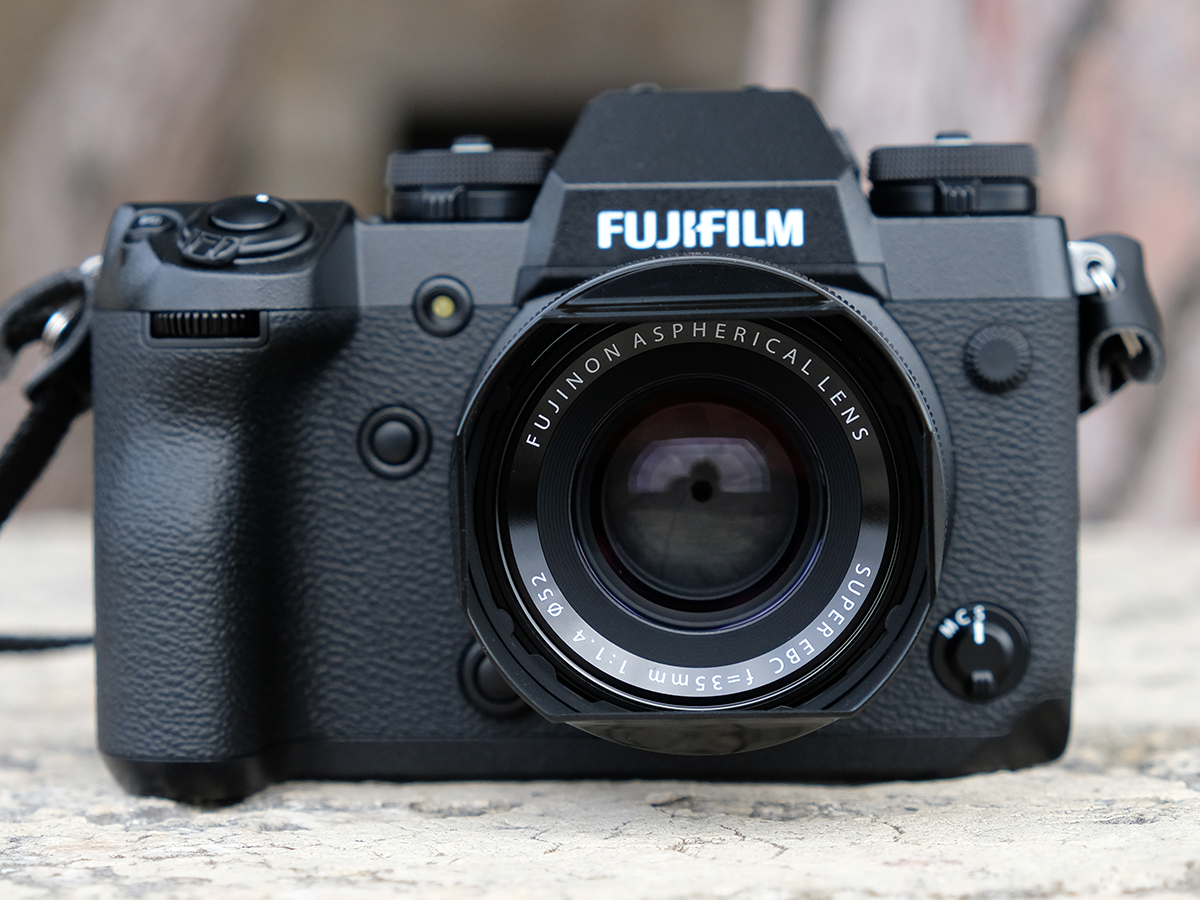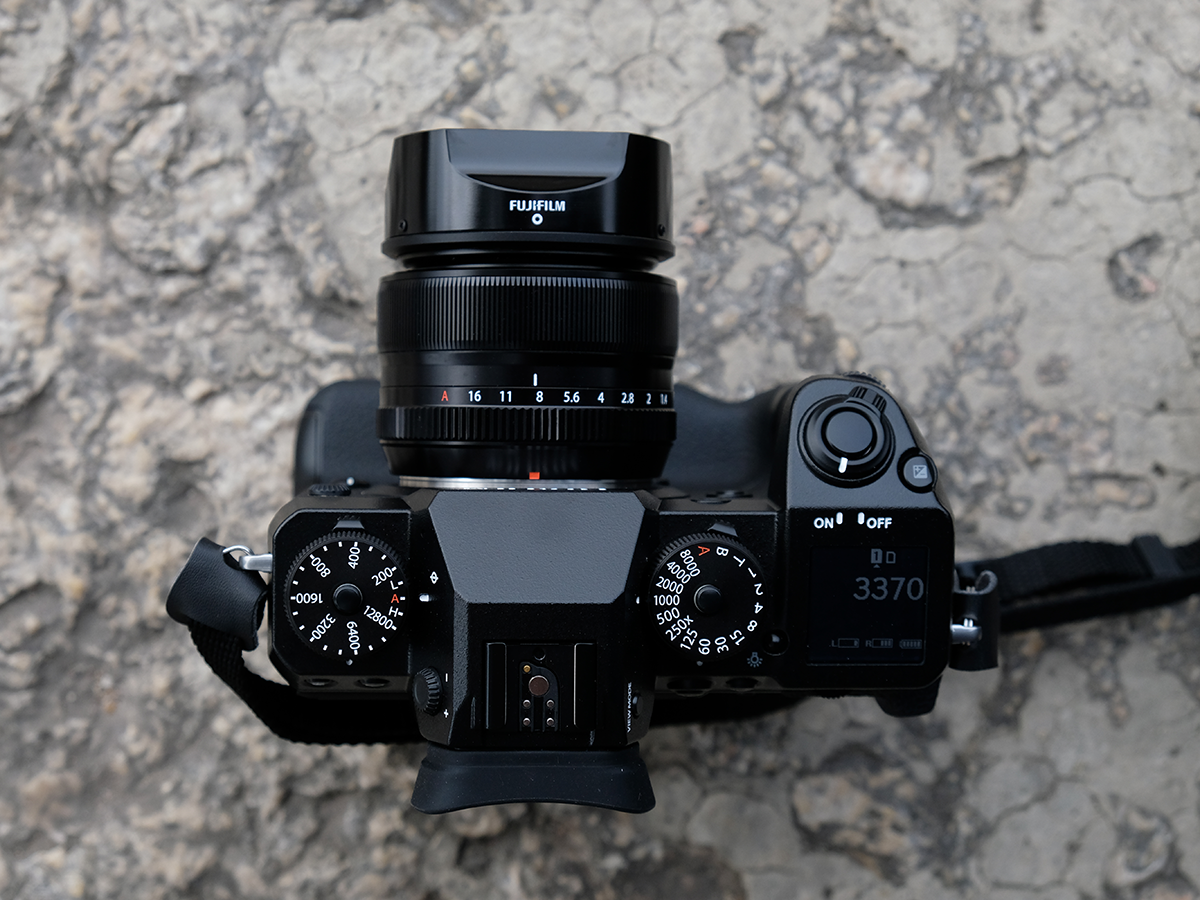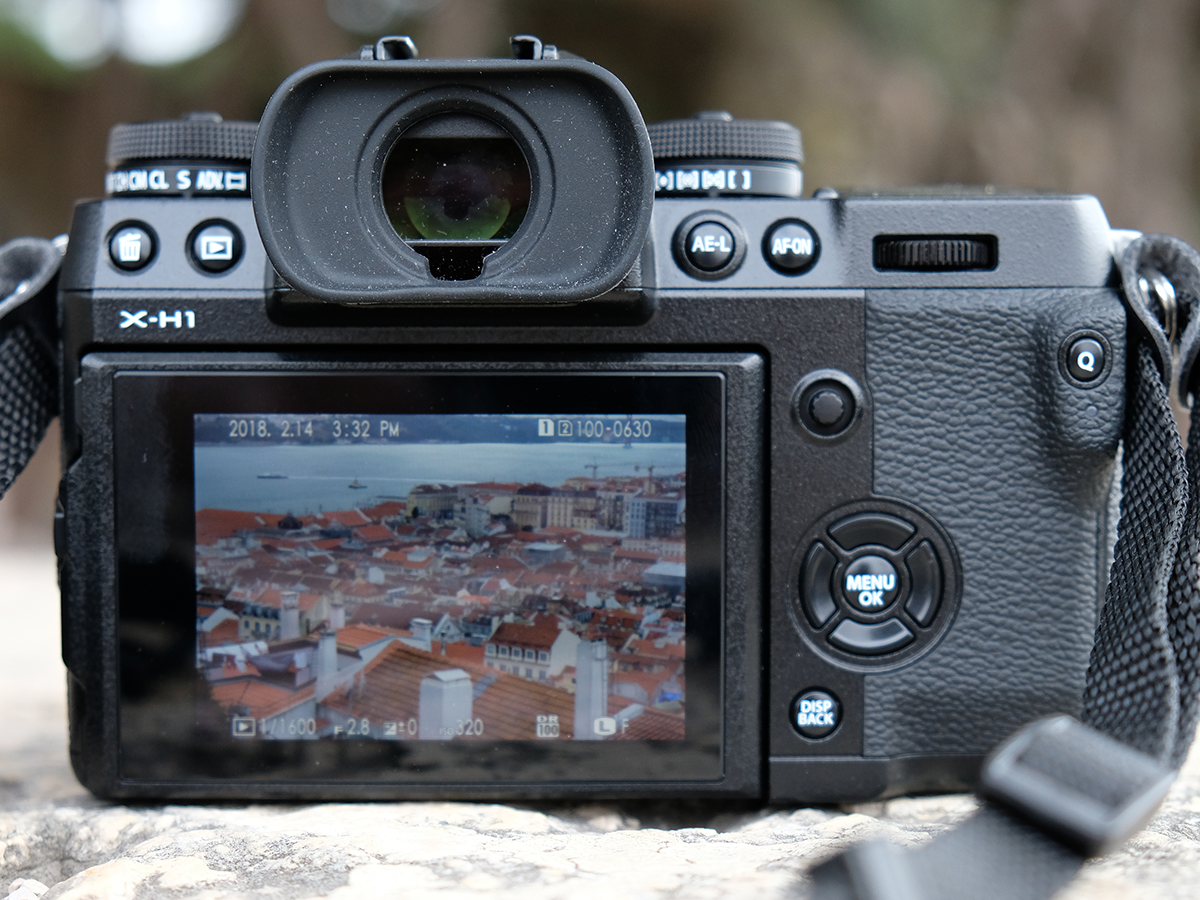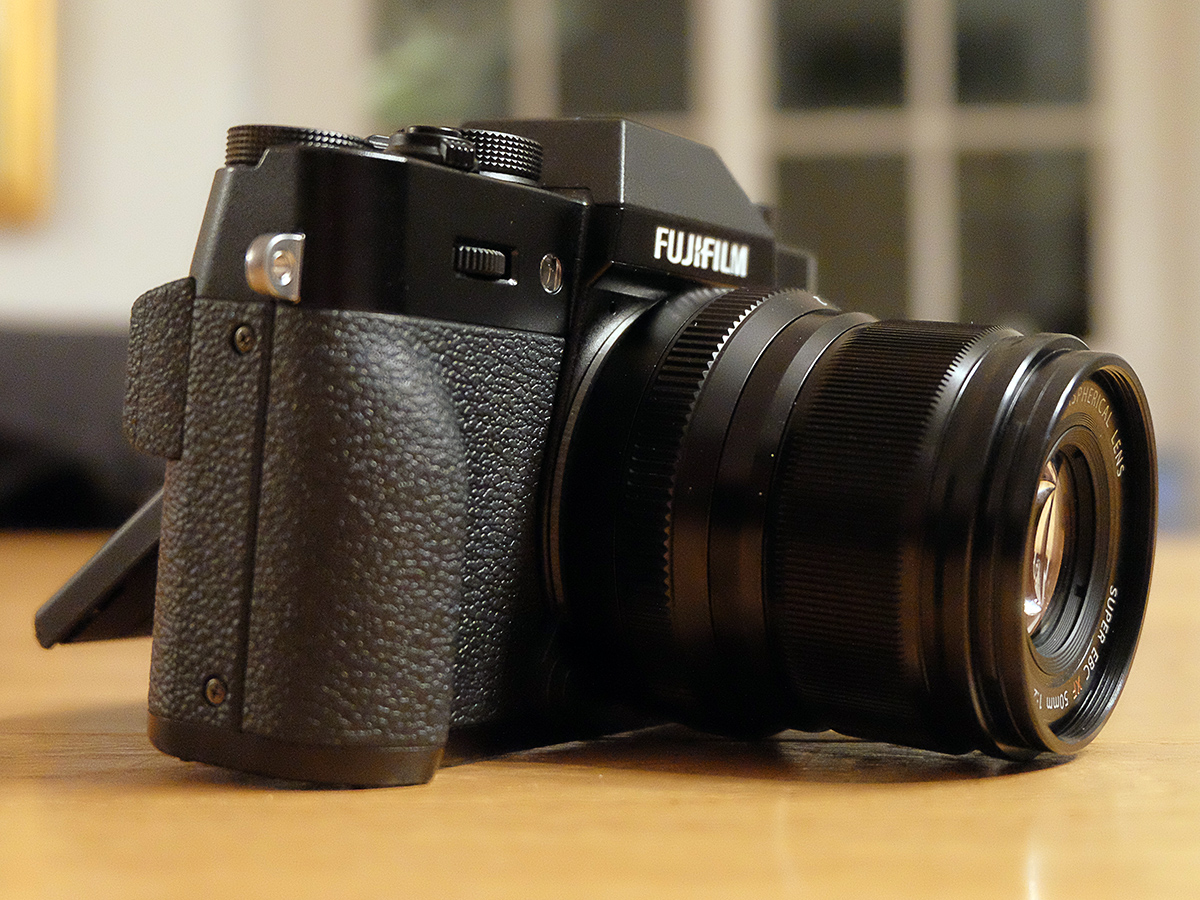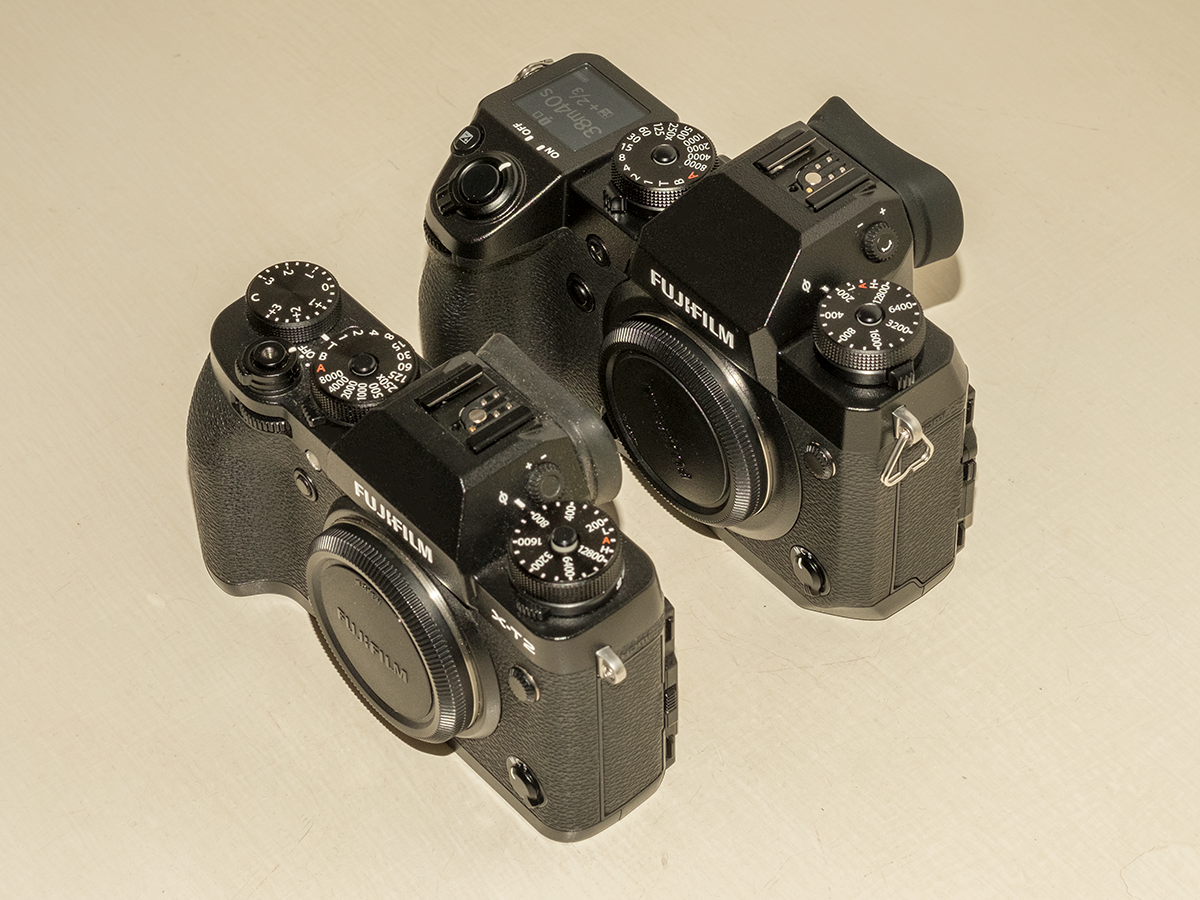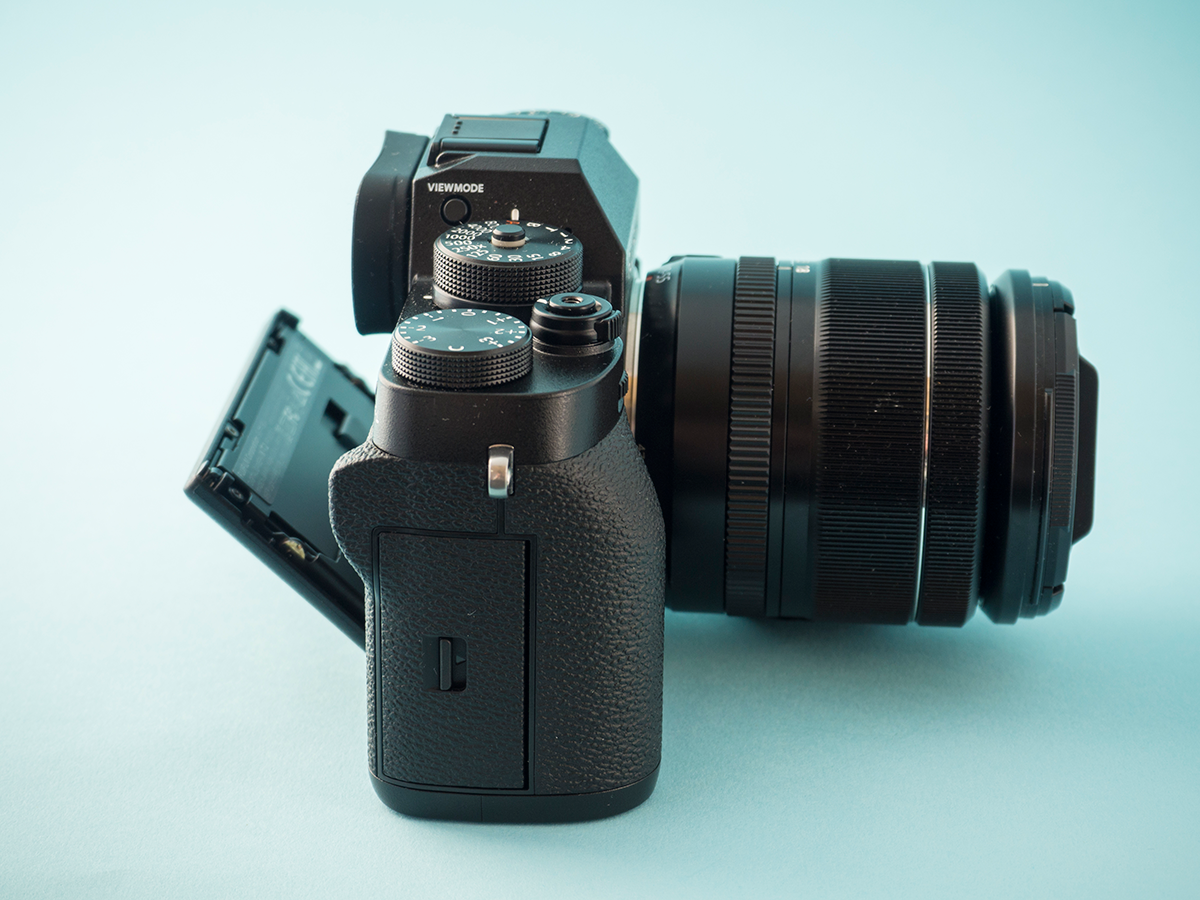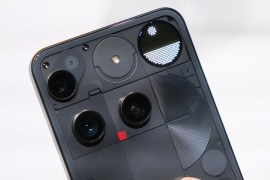Fujifilm X-H1 review
In-body stabilisation lifts the X-Series to new heights
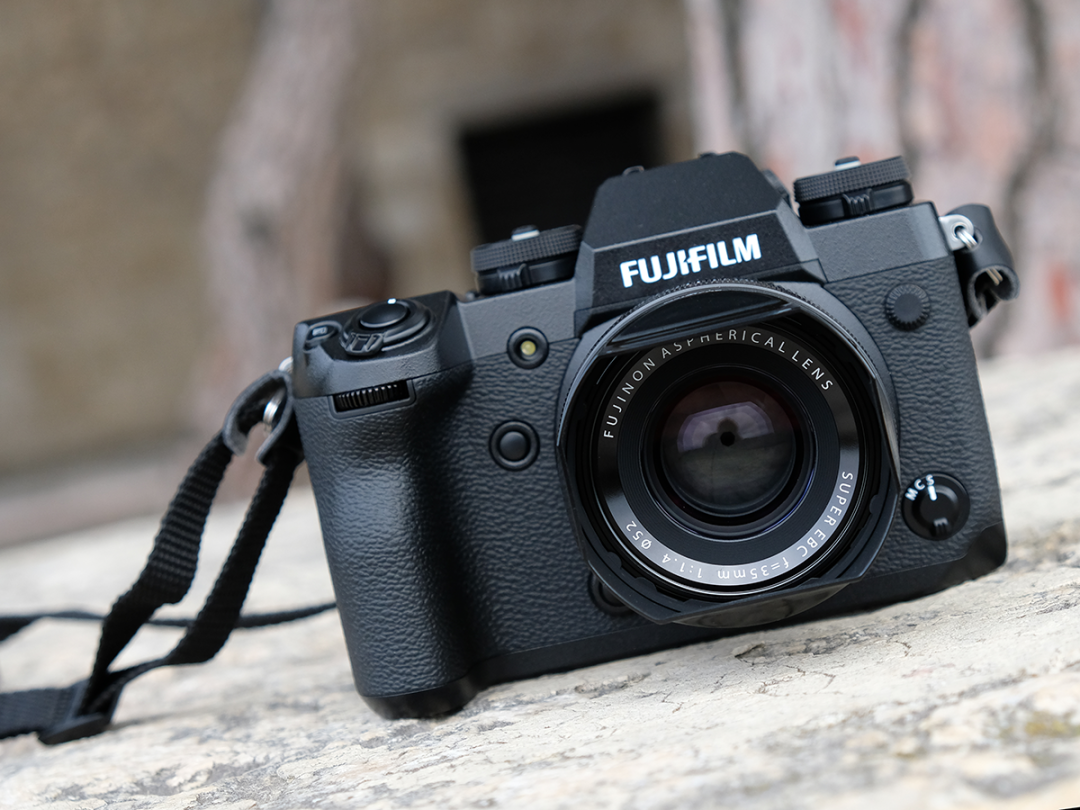
The X-H1 is the best compact system camera Fujifilm has made. There you go, review done and dusted in one line.
By adding in-body image stabilisation (IBIS) into a package that retains the class-leading sensor, distinctive stylish looks and user-friendly control system we already know and love from the X-T2, there was no way Fuji could fail here. And it hasn’t.
Only it’s not quite that simple. Because while the X-H1 really is Fuji’s best CSC yet, it also pushes the boundary of what you might reasonably consider to be compact.
Does that matter? Well now, there’s the question…
Design: big and beautiful
As I’ve already hinted, the X-H1 is big for a CSC. It’s taller, wider and deeper than the X-T2, with a much larger grip and chunkier prism for the viewfinder.
It’s still slightly smaller than most DSLRs – particularly those with the kind of pro features and rugged body you get here, but it’s a different story compared to most other mirrorless cams. It’s bigger, even, than Sony’s new A7 III – and that’s got a full-frame sensor inside it.
The reason for this sudden growth spurt is simple: it now has to accommodate image stabilisation tech. For most people this will be a worthwhile payoff, but if you’re used to X-Series cameras and value the fact that you can still slip them in a pocket… well, you’re going to need a bigger pocket.
Size aside, the X-H1’s body is a delight. It feels incredibly solid; drop it on to a pavement and you’re probably going to be paying the local council for repairs. Fuji has also upped the weatherproofing from the already impressive X-T2, with 94 seals now present; this is a camera you’ll be able to use in any conditions without fear.
The ergonomics have been tweaked, and mostly for the better. The deeper grip will please large-handed folk, and when you’re gripping a hefty lens such as the XF 16-55mm the whole package feels far better balanced.
Fuji has clearly been listening to customer feedback, and has made several of the buttons much bigger and easier to find, too. You mostly get the same options as on the X-T2, but there’s now a very handy AF-ON button round the back, which is great for if you prefer your focus to be separated from the shutter.
Actually, it’s just as well that’s been added, because the one unwelcome change on the control side of things is that Fuji’s made the shutter button so sensitive it should probably be nicknamed snowflake. This may again be a result of feedback – some people (including your reviewer) experienced problems with the X-T2’s shutter sticking. But it’s now so trigger-happy that the merest brush sets it off, and in testing I took several unwanted shots when I was merely trying to focus. On the plus side, it is now noticeably quieter when taking photos.
The other big change is more of a Marmite thing – there’s now a big LCD screen on top, in place of the exposure compensation dial.
Some people will love being able to get at-a-glance shooting info, but I’d rather still have the dial. OK, so you can still access exposure compensation via a tiny little button near the shutter, but part of the joy of X-Series cameras is the tactile nature of all those mechanical controls; I hope this isn’t a move away from that.
Looks-wise, it’s still the tried-and-tested design we fell in love with on the X-T1, only more chiselled. Think of it as the mid-way point between the X-T2 and the medium-format GFX-50S – and still gorgeous.
Features: steady as she snaps
Image stabilisation is clearly the big addition here – and it works brilliantly.
Fuji claims it’ll give you up to 5.5 extra stops of exposure, and in my tests that seemed about right. It certainly makes a massive difference, letting you shoot handheld at shutter speeds of around 1 second without any visible blurring. It’s also a massive help when composing shots, because it steadies the image in the viewfinder. This is particularly useful when zooming with a long lens and makes it far easier to get focus.
The in-body stabilisation is of the 5-axis kind, although if you’re using a lens with its own IS it’ll only use three axes, with the lens handling the other two. Either way, it’s something of a game-changer – more on that below.
It’s far from the only new feature, though. The electronic viewfinder has had a tasty upgrade, and now has a much higher resolution: 3.69k dots, up from 2.36k on the X-T2. You’ll really notice the difference in use, with images appearing much sharper and smoother. There really is no reason to pine for an optical viewfinder any more.
The LCD screen, meanwhile is now of the touchy-feely kind. This is a feature Fuji introduced on the X-T20, and it’s a welcome addition – up to a point. Although great for swiping through and zooming into images, you can’t use it for settings other than in the quick-fire ‘Q’ menu.
Plus, while you can also use it for taking shots and picking focus points, you’ll need to be careful, because the screen is very sensitive. I repeatedly took a shot or changed focus by accidentally hitting it with my nose when using the viewfinder. Yes, I have a fairly big nose – but I’m not exactly Pinocchio. As a result, I’d leave the shooting/focus option turned off, unless you’re using live-view – in which case it’s very handy. On the plus side, the screen also flips down and to the side, although it doesn’t turn in 360 degrees as many others now do.
Built-in Bluetooth is a boon, and makes hooking up the camera to a phone far easier. The connection process is still a little on the flaky side – when is it not? – but it’s a lot less likely to leave you flinging your camera across the room in frustration. The Camera Remote app is also much improved these days, and now gives you the option for up to 15-minute exposures; great for timelapses.
And then there’s the new battery grip. As with the one for the X-T2, this clips on to the bottom of the camera and gives you a load of extra functionality. It holds two batteries – which is important, because a single battery only lasts for around 300 shots – and also increases the burst speed shooting and length of 4K recording time.
Fujifilm X-H1 stills: better than ever
Although Fuji is bigging up the video side of things, still images are where the X-H1 really shines.
The sensor is unchanged from the X-T2 – the rumoured X-T3 later this year will presumably get an upgrade instead – but who cares when it takes such excellent images? You get 24.3MP and although it’s ‘only’ APS-C, it outperforms plenty of full-frame cameras on many levels.
As always, the Fuji colours are spectacularly pleasing, with the X-Trans sensor serving up rich greens in particular. The lovely film simulation modes, including the gorgeous hi-contrast black and white ACROS and the new video-focused ETERNA, are all present and correct too, and give your shots another dimension without ever looking gimmicky.
Like the X-T2 before it, the X-H1 performs excellently at high ISOs, with ISO 6400 a perfectly usable option; given that the IBIS also allows for longer shutter speeds, and that Fuji makes plenty of fast lenses, you have a tasty recipe for night-time shooting. There’s masses of detail in images, and if you shoot in RAW you can dig up plenty more.
Naysayers will complain about problems with ‘smearing’ of foliage and colour balance on skin tones, but the rest of us will be too busy enjoying our photos to care. And X-series cams still take the best out-of-camera JPEGs, too.
While the sensor hasn’t been changed, autofocus has had a few tweaks. This hardly seems necessary, given that the X-T2 is phenomenally quick and accurate, but I’m not complaining. Apparently, a new algorithm has expanded the area covered by phase detection, and also increased sensitivity in lower light. That’s a hard thing to test without getting too technical, but certainly it locks on to subjects very quickly and accurately, even in less-than perfect conditions.
Most of the above is true of the X-T2 and X-T20, of course, but the IBIS moves the X-H1’s image quality on to the next level.
Out on Epsom Common in search of interesting subjects for this review, I unexpectedly came face-to-face with a deer and fawn. The sky was overcast, it was approaching dusk, and I was surrounded by trees and bushes. I didn’t have time to adjust settings for fear of missing the shot, so ended up shooting at f8 with a 1/3 second exposure. It really shouldn’t have worked – zoomed at 55mm with a heavy lens, you’d normally need a shutter speed of at least 1/30 for a blur-free image, probably more like 1/50.
But the X-H1 did its job and took a clear, sharp image at four stops less than that (you’ll have to ignore the overexposure, which is pure user error).
In four days of shooting with it, the X-H1 was nigh-on perfect. Looking back over the hundreds of images I took, almost all are sharp, correctly focused and well exposed. Plus, with the battery grip in place, it can rattle off shots at 11fps, and while it’s not the absolute fastest camera out there, it’s quick enough for mere mortals. Truly, it’s one of the best stills cameras you’ll see at this price.
Fujifilm X-H1 video: a true contender
Fuji massively upgraded the X-T2’s video skills, turning the X-Series from an also-ran into a proper contender on that front. And the X-H1 takes things a step further.
Admittedly, most of the options won’t mean much to you if you mostly use it for shooting snippets of the cat doing something stupid or your kids falling off their bikes. But they’re there all the same.
So (deep breath)… you can now shoot video in up to 200mbps bandwidths; record in F-log format straight to SD card; 4K footage now runs to 15 minutes, or 30 with the battery grip; face-tracking works across all resolutions; there’s slow-motion recording at up to 120fps in full HD; a flicker-reduction option for indoor shooting has been added
Oh, and there’s the new ETERNA film simulation. This has been developed specifically for video, and gives everything a slightly subdued, moody look. Great if you’re shooting a film noir or maybe a funeral, probably not so much use down at the beach.
I haven’t yet tested the X-H1 against our favourite video-star camera, the Panasonic GH5S, but it’s definitely a class act. Footage is sharp and smooth, with the image stabilisation again helping out here. The tracking works excellently, and you can also use the touchscreen to change focus if necessary. The slow-motion mode is great fun, though it’s a shame it’s not available in 4K.
I still think of the X-H1 as a stills camera with good video skills rather than the other way around, but for most people that’ll be the right balance.
Fujifilm X-H1 rivals
The X-H1 is Fuji’s new flagship camera, and if you’re wedded to X-Series snappers and want the absolute best image quality, you’ll want to trade up to it. The image stabilisation alone is enough reason to get it over the X-T2 (above right, and above left versus the X-H1) – and it’s far from a one-trick pony either.
However, if you like a camera that can be stashed in a pocket, or can’t justify the £1600 outlay on the X-H1, the X-T20 (above centre) is the best bang-for-buck option on the market. It’s currently half the price of its newly hatched big brother, and outside of the IBIS will take very similar images.
Personally, I’ll be waiting to see what the rumoured X-T3 brings before I upgrade. If it gets IBIS, but in a smaller body, I’ll be sold; I suspect, unfortunately, that it won’t.
Outside of Fuji’s own cameras, the new Sony A7 III looks like being a serious rival. It’s more expensive (£2000), but packs a full-frame sensor and frighteningly adept autofocus system. We’ve not tested it yet, but look out for a review soon.
Fujifilm X-H1 verdict
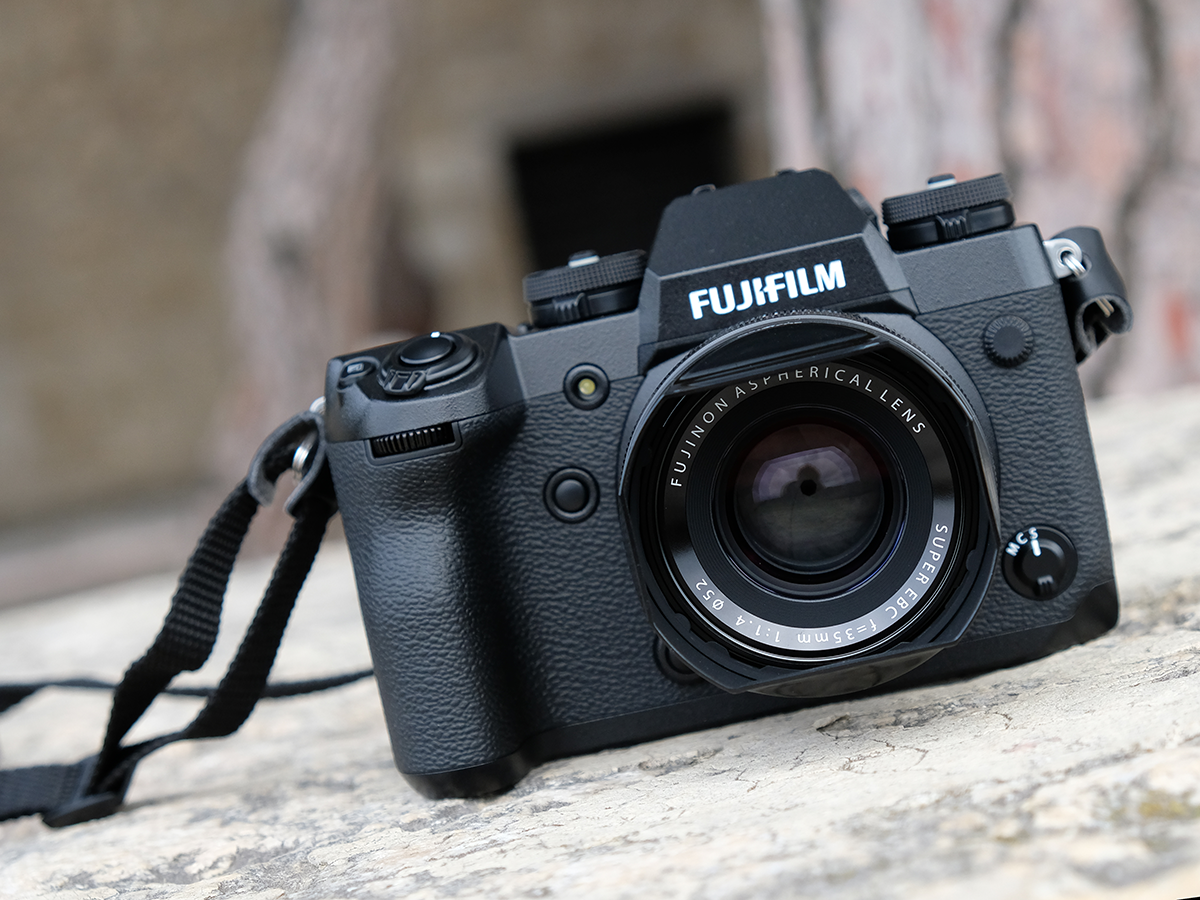
In-body image stabilisation is far from a new thing, so perhaps we shouldn’t give Fuji too much credit for including it here. Then again, what may be a small step for most mirrorless cameras represents a giant leap for the X-Series. Without it, the X-T2 was our favourite premium compact system camera; with it, the X-H1 is, well, even better than that.
The other upgrades here, from the touchscreen to the higher-res viewfinder to the extra video capabilities, are all worth having, if not exactly game-changing. But the IBIS is exactly that. Yes, other cameras might already have it, but they don’t also have Fuji’s mastery of colour and autofocus to go with it.
OK, so the payoff for the new tech is a bigger body, but if you’re the kind of pro or serious amateur who owns several hefty lenses, that won’t bother you. And let’s face it, if you’re a pro you can afford an X-T20 as a smaller back up anyway.
Ultimately, Fuji has here crafted a wonderful all-rounder that masters almost any situation and could easily last you for years. Or at least until it releases something even better in 2019.
Stuff Says…
By adding in-body image stabilisation, Fuji’s created its best CSC yet
Good Stuff
Image stabilisation works wonders
Superb stills
Video now among the best
Bad Stuff
Bigger body won’t please everyone
Trigger-happy shutter button
Pricey
